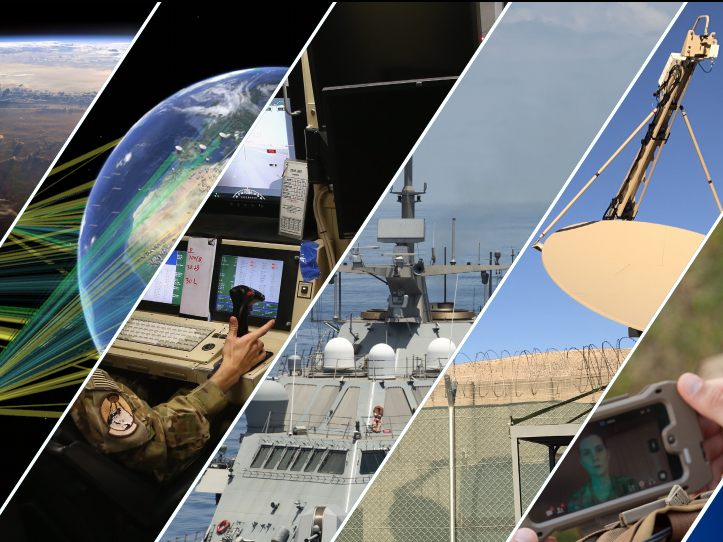
The future space environment will need to be more resilient and capable of responding to an evolving set of threats, challenges and U.S. Government requirements. Industry experts, political and military leaders as well as pundits have been saying this for years – and with good reason. The ability to sustain operations, especially in the face of capable adversaries, is critically important to our national security. The commercial satellite communications industry has been, and will be, an important partner in that effort.
As we review our third year of The Government Satellite Report, these themes resonate through some of our top stories.
Bold steps
2017 ushered in another wave of innovative and paradigm-challenging efforts. With commercial capabilities quickly outpacing dated programs of record, the government began to take steps towards laying plans for a more secure and resilient satellite communications infrastructure. U.S. Strategic Command’s General Hyten and U.S. Air Force Space Command’s General Raymond established and evolved a Space Enterprise Vision that includes COMSATCOM as a key component of U.S. national security in space.
A key component of this vision is the Wideband Analysis of Alternatives (AoA) to satisfy the military’s future wideband communications requirements. The AoA is leveraging the intent of the Space Enterprise Vision to determine how to develop an integrated satellite architecture that combines both military satellites and COMSATCOM services. This architecture will undoubtedly deliver advanced applications by making next-generation Medium Earth Orbit (MEO) and Geostationary Orbit (GEO) High Throughput Satellite (HTS) commercial technologies readily available for government and military operations.
Along with the AoA effort, leaders in Congress and the Pentagon debated the potential benefits of a separate branch of the military dedicated to space. Congress concluded 2017 by providing sweeping new guidance and authorities to the Department of Defense regarding the oversight of the wider space enterprise and more specifically, the procurement of commercial satellite communications. Implementing those authorities will be another exciting activity we’ll track closely in 2018.

2017 ushered in another evolution in how and what type of commercial satellite services the U.S. Government will pursue. 2017 also saw the rise of other government trends that I believe will continue and grow in 2018, and beyond.
High Throughput and Low Latency Applications
MEO and GEO HTS satellites played an increasingly essential role for the U.S. Government in 2017. SES Space and Defense delivered nearly 5 Gigabits per second of managed MEO services supporting over 13 sites globally to government customers ranging from the Department of Defense (DoD) to the National Oceanic and Atmospheric Administration (NOAA). We see an ever-increasing demand from the U.S. Government for expanded high throughput, low latency capabilities and the mission applications enabled by those services.
Continued Use of Hosted Payloads
Last year we also saw the continued, successful use of hosted payloads by the federal government. In 2017, SES satellites were chosen to host a Wide Area Augmentation System (WAAS) payload for the Federal Aviation Administration (FAA) and the Global-Scale Observations of the Limb and Disk (GOLD) payload for NASA. The continued success of these hosted payload programs has provided validation for hosted payloads as an economical and efficient alternative to launching an entire dedicated satellite for the same mission. I believe that we will see more innovation in how the U.S. Government pursues hosted payload opportunities on commercial satellites in 2018 and beyond.
CS3 and Beyond
As of October 2017, the COMSATCOM industry will be able to expand its services through the General Services Administration (GSA) Complex Commercial SATCOM Solutions (CS3) contract award. Awardees, including SES Space and Defense will be able to provide capabilities through this indefinite delivery, indefinite quantity (IDIQ) contract vehicle with a $2.5 Billion ceiling. CS3 will allow federal agencies to bid large, complex, custom satellite solutions for the next ten years exclusively among its 22 industry teams. We expect a lot more COMSATCOM opportunities to be released under CS3 than its predecessor, CS2 – including services that will provide high throughput and low latency to the government end-user.
2017 was an exciting year in SATCOM and it set the stage for a significant evolution in how the federal government and the United States military address their satellite communications requirements. The COMSATCOM industry,and SES Space and Defense in particular ,is excited by what lies ahead in space. We are prepared and committed to helping the government overcome the challenges it faces, to include providing a more resilient, disaggregated and distributed satellite communications architecture.
The Government Satellite Report remains committed to bringing you the latest satellite trends, breaking news and insightful interviews with government and satellite industry leaders in 2018. But first, here is a look at some of the articles that our readers found most compelling in 2017. Thank you for being a loyal reader.
